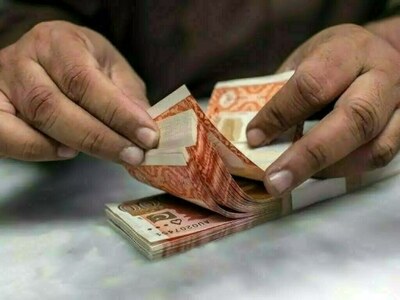Significant Drop Projected in Pakistan’s Interest Payments for FY26
The federal government anticipates a substantial decrease of 16 percent, equivalent to Rs 1.57 trillion, in interest payment obligations for the upcoming fiscal year (FY26). This projection is primarily due to a considerable reduction in policy rates.
This anticipated decline has also contributed to an overall reduction in the federal budget outlay, which has decreased from Rs 18.877 trillion in FY25 to Rs 17.573 trillion for the next fiscal year.
With the policy rate experiencing a notable decrease of 11 percent over the past year, the government has revised its estimates for the next fiscal year accordingly.
According to the budget document for FY26, the federal government estimates total interest payments to be Rs 8.207 trillion, a significant drop from the Rs 9.775 trillion estimated for the current fiscal year (FY25), representing a sharp reduction of Rs 1.568 trillion.
Pakistan’s economy has shown consistent signs of stability and recovery over the past two fiscal years (FY24 and FY25), driven by proactive government initiatives and effective macroeconomic management.
Inflation has slowed considerably, foreign exchange reserves have increased, and the exchange rate has stabilized. Consequently, the State Bank of Pakistan (SBP) commenced a measured easing cycle in June 2024, cumulatively lowering the policy rate by 1100 basis points, or 11 percent, from 22 percent to 11 percent as of May 2025.
Budget documents further indicate that the estimated interest payment for the next fiscal year is Rs 738 billion lower than the revised estimate of Rs 8.459 trillion. The most significant decrease is projected in domestic interest payments, estimated at Rs 7.197 trillion for FY26 compared to the Rs 8.376 trillion projected for FY25, reflecting a decrease of Rs 1.542 trillion. Revised estimates place domestic interest payments for the current fiscal year at Rs 7.907 trillion.
External interest payments have seen a slight decrease of Rs 29.3 billion, totaling Rs 1.009 trillion for FY26, compared to Rs 1.039 trillion for the current fiscal year.
It is important to note that lower-than-anticipated revenue collection has led the government to borrow from the domestic banking sector to finance the fiscal deficit, with the federal government being a primary borrower.



Comments (0)
No comments yet. Be the first to comment!
Leave a Comment